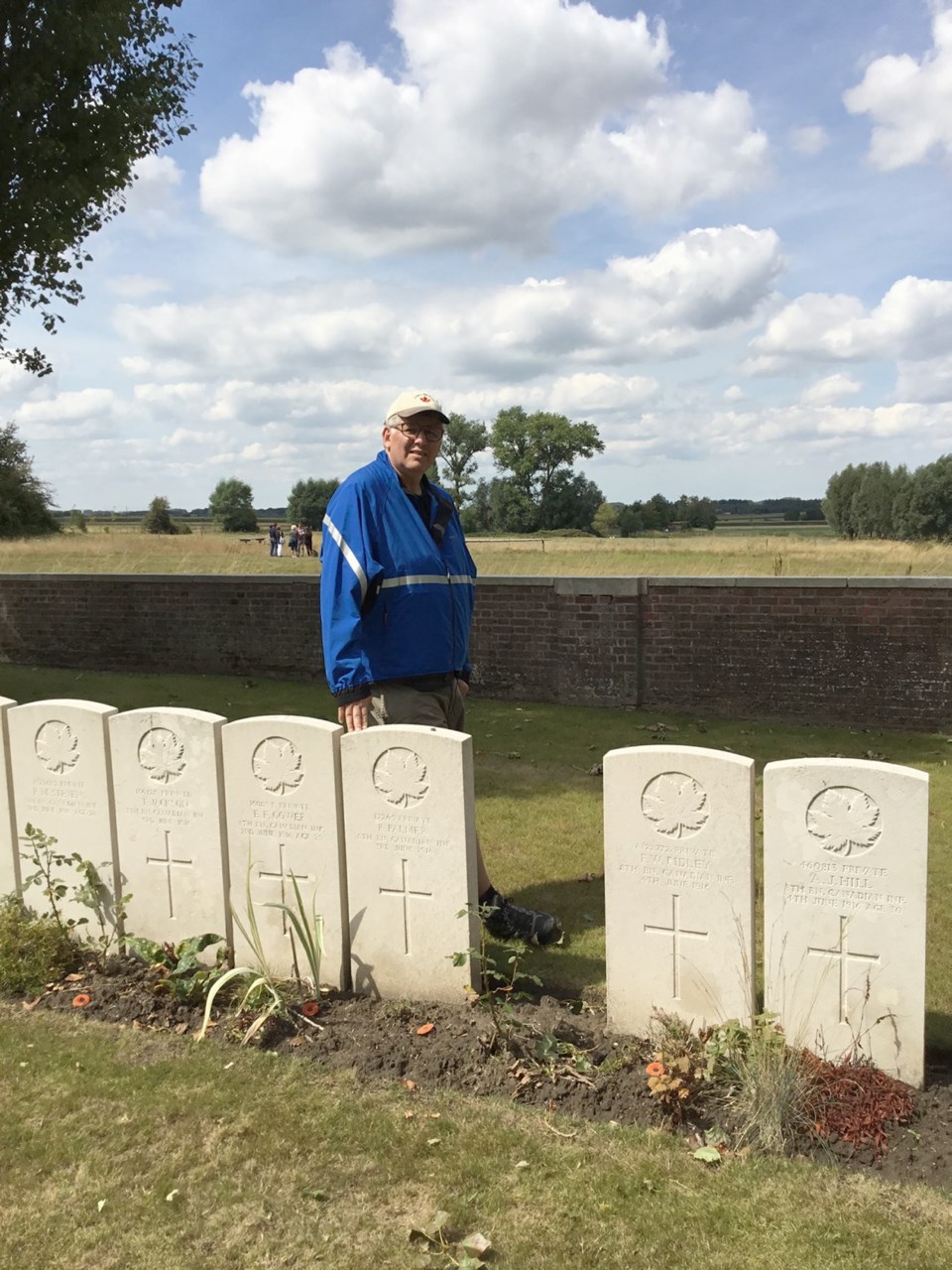Place-names and memorials across Canada have a Belgian influence that can be traced to battlefields of the First World War, says a Victoria historian.
Paul Ferguson, associate registrar at the Royal B.C. Museum, is in Belgium to deliver a lecture on place-names transported to Canada from First World War battlefields.
“Places like Sanctuary Wood, Passchendaele, Zonnebeke, Zillebeke, Ypres, Hill 60,” Ferguson said. “These place names were once the common language of a generation.
“They were in everyday conversation and that’s mostly gone now,” he said. “But you can still find evidence of it.”
> For more stories on Remembrance Day and the First World War, go to timescolonist.com/more
Ferguson, the son of a career soldier, has always been interested in Canada’s military conflicts and how it affected citizens at home. His fascination with the repeated appearances of Belgian place-names — and those of other European countries — was piqued during a walk through Victoria’s Ross Bay Cemetery.
He noticed a family memorial marker that listed a George Walter Nation dying near Zillebeke in Belgium during the First World War. He became intrigued at the notion of a family memorial stone in Victoria inscribed with the name of a small town in Belgium.
“I became curious about Mr. Nation and about the community of Zillebeke, which I eventually had to visit,” Ferguson said.
Since then, he has tracked 86 Belgian place-names in British Columbia alone, with all those names traced to First World War battlefields.
Near Cowichan Lake, for example, lies a former manganese mine at a spot called Hill 60. The name was first used to describe a site south of Ypres where soldiers fought in 1915.
Ferguson said the mine was started by two former soldiers, one with the Canadian Engineers and the other with the 3rd Canadian Tunnelling Company, both of whom fought at Hill 60.
“These sorts of names can be found all over,” he said. “They can be found on maps, on plaques, on cenotaphs, on churches.”
Ferguson will be delivering his talk about Belgian place-names in Canada at the Memorial Museum Passchendaele 1917 in Belgium on Saturday, letting people know how their homeland has taken some small roots in Canada.
“It allows me to say: ‘Belgium you are still remembered,’ ” said Ferguson. The museum approaches its First World War subject material from unique perspectives, he said: memory and empathy, making for interesting interpretations.
“I don’t know if the Belgians are actually aware of the how these memories are perpetuated in Canada,” he said.
“I’m very curious to see what their reactions will be.”
Ferguson’s lecture is being recorded and can be watched on Sunday, 1:15 p.m. to 2:15 p.m. at the Royal B.C. Museum’s Newcombe Conference Hall, part of Remembrance Day events at the museum



